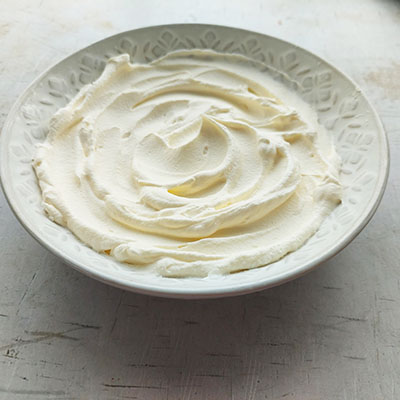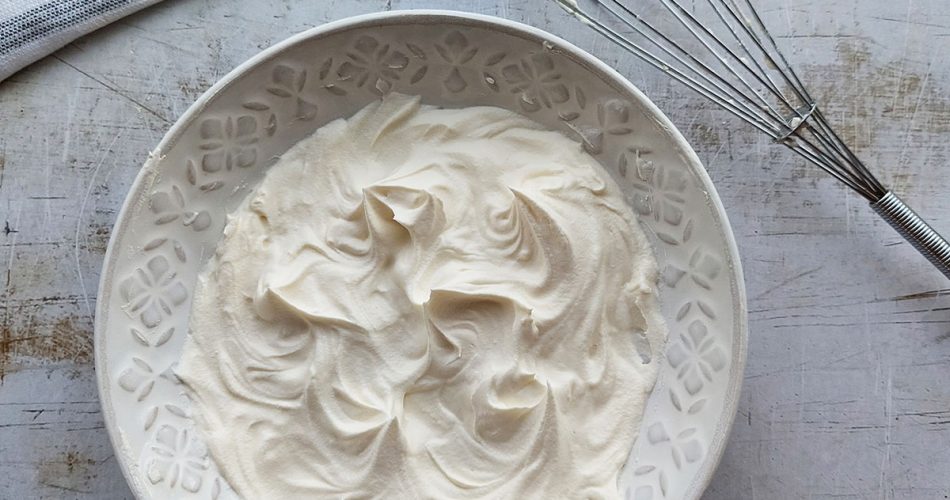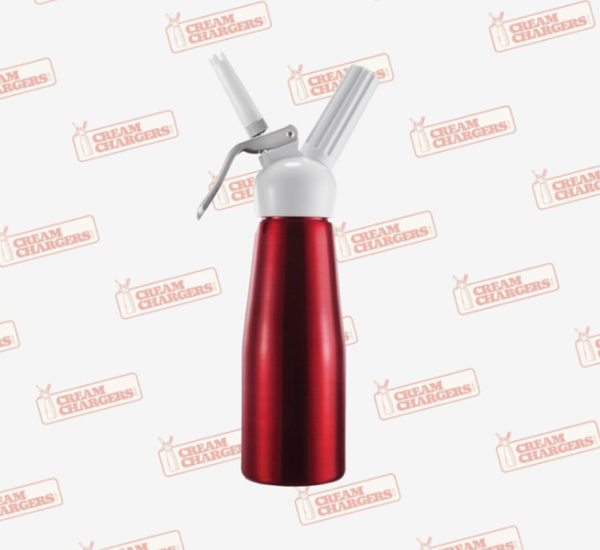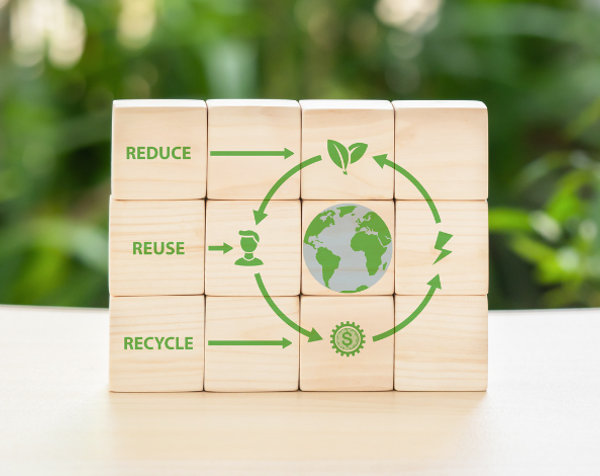Whether you topping a bowl of berries or swirling frosting over cupcakes, whipped cream is the crowning glory of any dessert.
It’s an amazingly versatile blank canvas to add flavour and texture to suit your sweet or even savoury dishes.
Cream is really simple to whip, but it can be tricky especially if it’s your first time. Timing and observing is equally important because over whipping can separate the cream making it unusable.
Our guide on how to make the perfect whipped cream will help you achieve the ultimate perfection. With pictures and instructions all the way to create impressive whipped frosting for all your desserts.
Equipment and how it’s used
First let’s start with the types of equipment you can use for whipping cream.
Whisks, bowls and beaters should preferably be chilled in the fridge for at least 15 minutes before using. Cream whips up faster when using cold equipment.
Balloon whisk
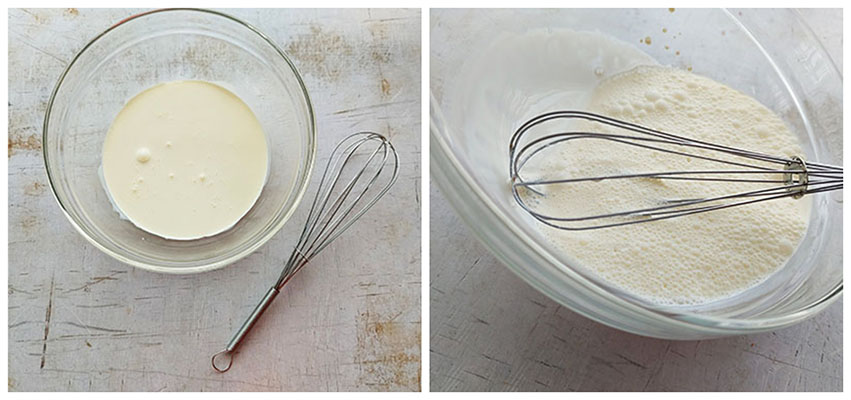
Balloon whisks are amazing tools designed to increase the amount of air you can whip into cream Perfect when whipping up small amounts (about 1 cup of cream).
When using a balloon whisk: Pour cold cream into the bowl. tilt the bowl at an angle so the cream sits in one section of the bowl.
Continuously whisk in a circular motion until the cream thickens and increases in volume. Be careful not to over whip and split the cream.
Hand held mixer or Immersion blender
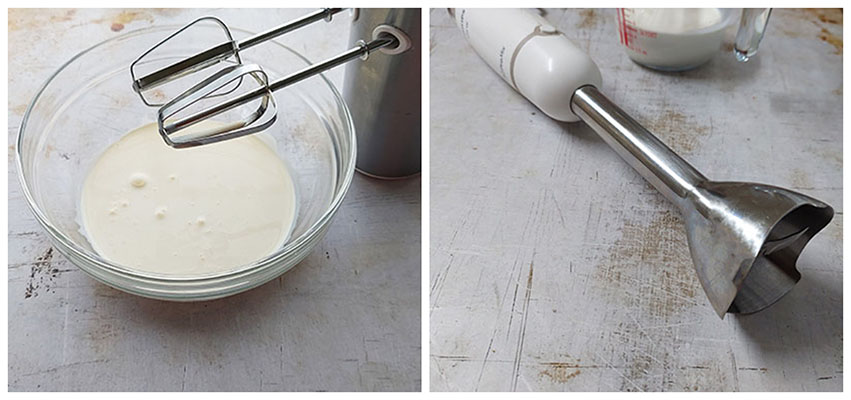
This is a great tool if you need to whip up more than a cup of cream. With a little less arm work than a balloon whisk, a hand-held mixer or immersion blender gives you control over the texture of cream you wish to achieve.
Pour the cream into a large bowl, because the cream tends to splatter when you start beating. Always start with a low setting, moving on to a medium setting.
As you reach the stiff peak stage, drop the speed to low again to avoid over whipping.
Stand mixer
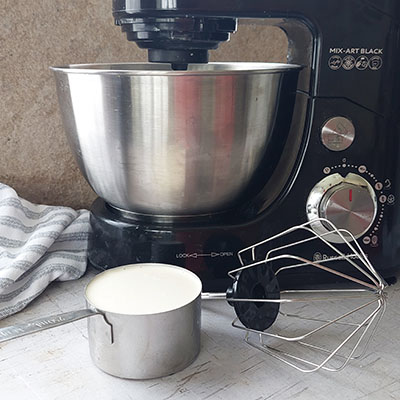
A stand mixer is another powerful tool if you need to beat large amounts of cream. The beaters do all the work, but you have to watch the cream.
Not paying attention or walking away could mean coming back to a bowl full of curdled, overwhipped cream. These mixers are usually powerful and whip up cream much faster than a whisk or hand-held mixer.
Use your beater attachment and start with the low setting, gradually moving onto medium, then low again, beating to your preferred texture and how it is to be used.
Types of cream suitable for whipping
It’s a good idea to check the label of your cream to see if it is suitable for whipping into fluffy billowy mounds.
Some creams contain very little fat which is often used to add creaminess and richness to sauces or gravies.
The low-fat content keeps the cream in its liquid form and prevents the cream from being whipped.
The amount of fat content will determine the stage the cream is able to whip up to.
Here is what to look for when choosing the right type of cream
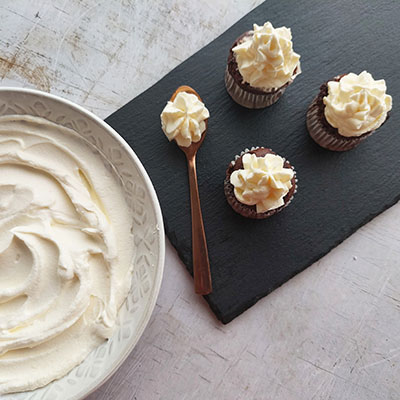
Heavy or double cream
With approximately 48% fat content, heavy whipping cream has a rich, creamy texture. It whips up very well, producing stiff peaks. When whipped and piped, it holds its shape up to 48 hours when refrigerated.
Whipping cream
Whipping cream contains approximately 35% fat. It whips well, and produces a light and airy texture, with soft peaks perfect for topping on fruit or light cake decorations.
Single cream
Single cream also referred to as pouring cream contains approximately 18% fat. This type of cream is usually poured into sauces or gravies. With its low-fat content, you will not be able to whip single cream.
Whipped cream stages
Depending on how you plan to use the cream, your recipe will either call for a soft peak or stiff peak whipped cream.
We’ve made up a great visual guide and tips to help you get to the correct whipped cream stage.
Keep in mind that the times given in the guide when using a stand or hand-held mixer are approximate. This is due to the fact that different brands of electric and stand mixers are more or less powerful than others.
Observing the texture as indicated in the images will guide you much better in achieving your perfect frosting or topping.
Get the cream out of the fridge only once you are ready to start beating.
Cold cream whips up faster and to a fluffier volume compared to room temperature cream. Remember that your equipment, whisk bowls and beaters should also be cold.
Cold cream whipped in a cold bowl with cold beaters equals better volume and texture.
No peaks, cream starts to thicken
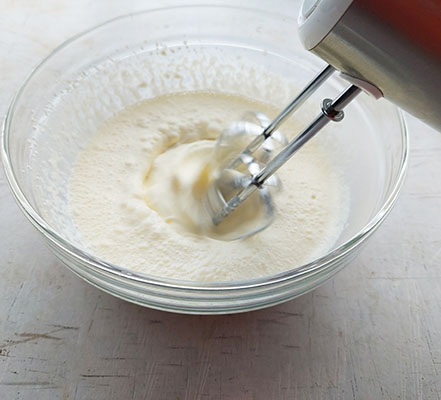
Pour the cold cream into the bowl. If you are using a stand or electric mixer, turn it on to a low setting to start beating. Within 2 minutes the cream begins to thicken.
At this stage the cream is thickened, but no peaks form when the beaters or whisk is lifted out of the cream
Soft peaks
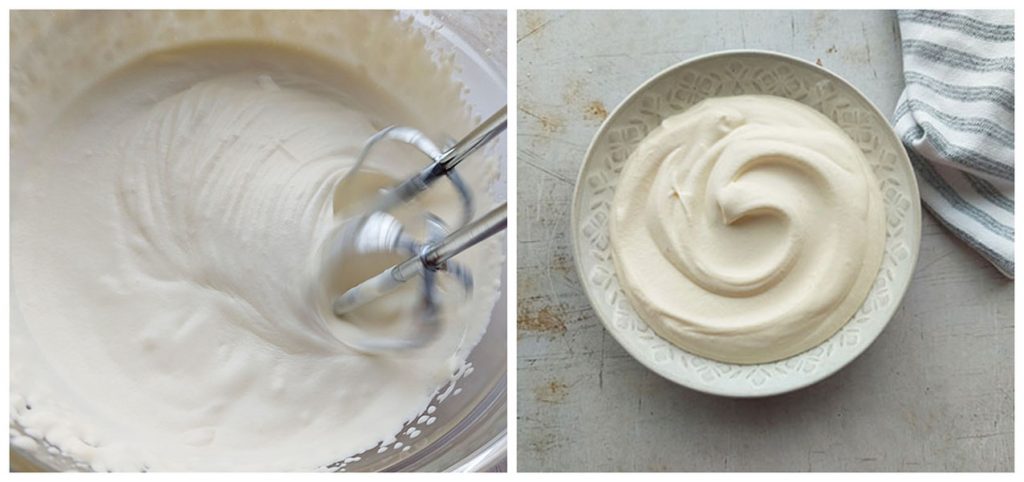
As the cream begins to thicken turn up the speed to a medium setting and beat for approximately 4 to 5 minutes until the cream reaches the soft peak stage.
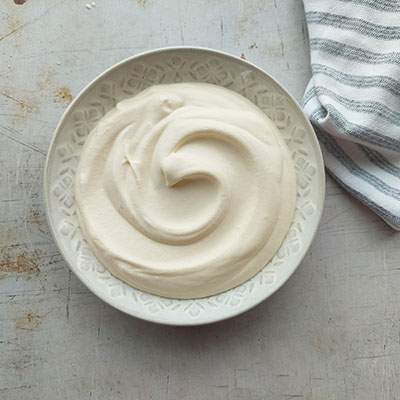
The beaters or whisk will leave soft traces or lines in the the cream. You will know when you have reached this stage when you lift up the beaters the cream holds its shape.
However, the tip of the peak curls over on itself. You can use the cream now if your recipe requires the soft peak stage.
Stiff of firm peaks
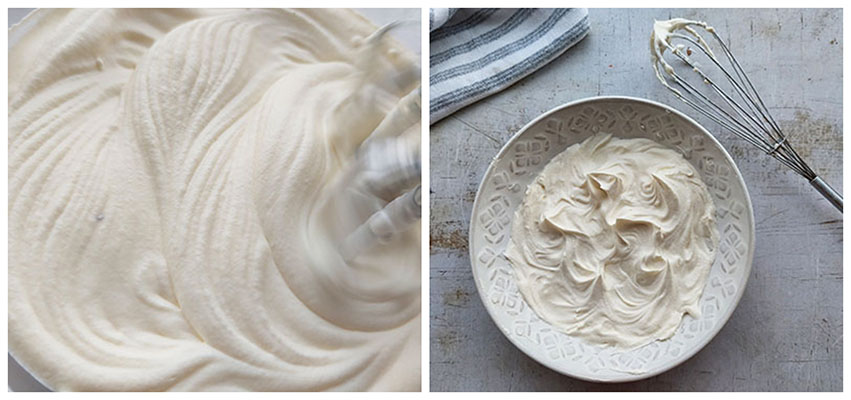
Beating the cream for a further 2 minutes will produce firm or stiff peaks. You will know that you have reached this stage once the beaters or whisk leave distinct traces or lines on the cream.
Stop beating the cream now and as the beaters or whisk is lifted out of the cream it forms firm or stiff peaks.
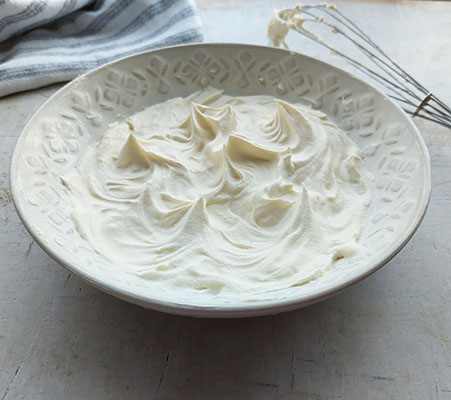
Whipping the cream past the stiff peak stage produces a grainy texture, or separating into solids and liquids. Besides the texture, the flavour is also negatively impacted. The cream is not usable for piping, filling or scooping at this stage.
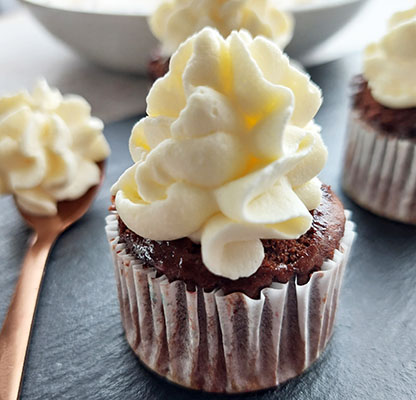
At what stage to flavour whipped cream
Whipped cream can be served as is or flavoured, producing a topping or frosting to suit the dessert.
Add your flavouring when the cream starts to thicken, but before it reaches the soft peak stage. This will give any flavouring you choose time to properly infuse throughout the cream.
Delicious flavourings include
- Sugar: Powdered, granulated or castor sugar can be used to sweeten your whipped cream. It is preferable to use powdered sugar because it helps stabilise and sweeten your whipped cream at the same time.
The small amount of corn starch present in powdered sugar discourages weeping that usually occurs when whipped cream stands longer than a few hours.
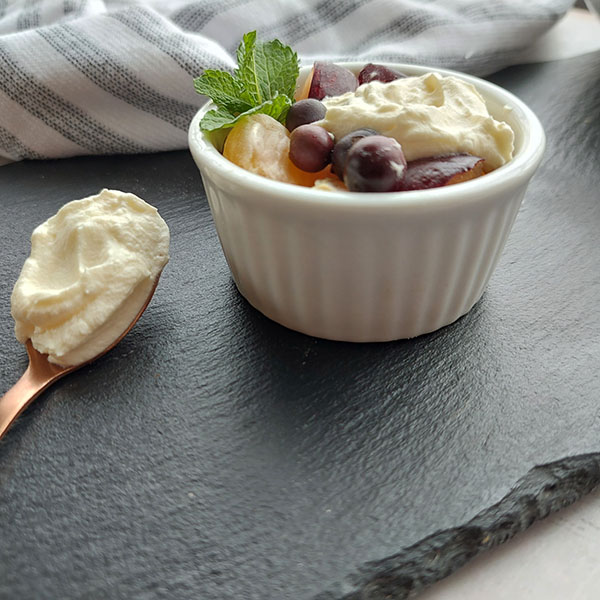
Tips for the best whipped cream
No matter the stage you are whipping your cream to, these tips will help produce the best results always.
- Use cold cream straight out of the refrigerator: The cream must be cold when you start, or it will not whip correctly. If the cream is warm or even at room temperature, the fat loses its effect as a stabilizer, and your cream will fall flat. The cream may thicken, but even vigorous whipping will not produce a light and fluffy texture.
- Use the correct utensils: Using a spoon to whip the cream is not going to produce a light airy texture you are looking to achieve. Whisks and beaters are designed to incorporate air into a mixture. These tools are perfectly suited to create a light and fluffy whipped cream.
- Do not overbeat the cream:Stop whipping or beating your cream as soon as it reaches the stiff or firm peak stage. Beating the cream beyond this point is going to result in a grainy, separated texture. This type of texture is not suitable for piping, topping of frosting.
Delicious ways to enjoy cream whipped at different stages
Soft peak whipped cream is delicious scooped or served with:
- Pies, like apple or pumpkin
- Brownies
Stiff or firm peak whipped cream makes perfect frosting or piped swirls:
- Spread whipped frosting between layers of cake
- Pipe decorative swirls on cakes and cupcakes.
